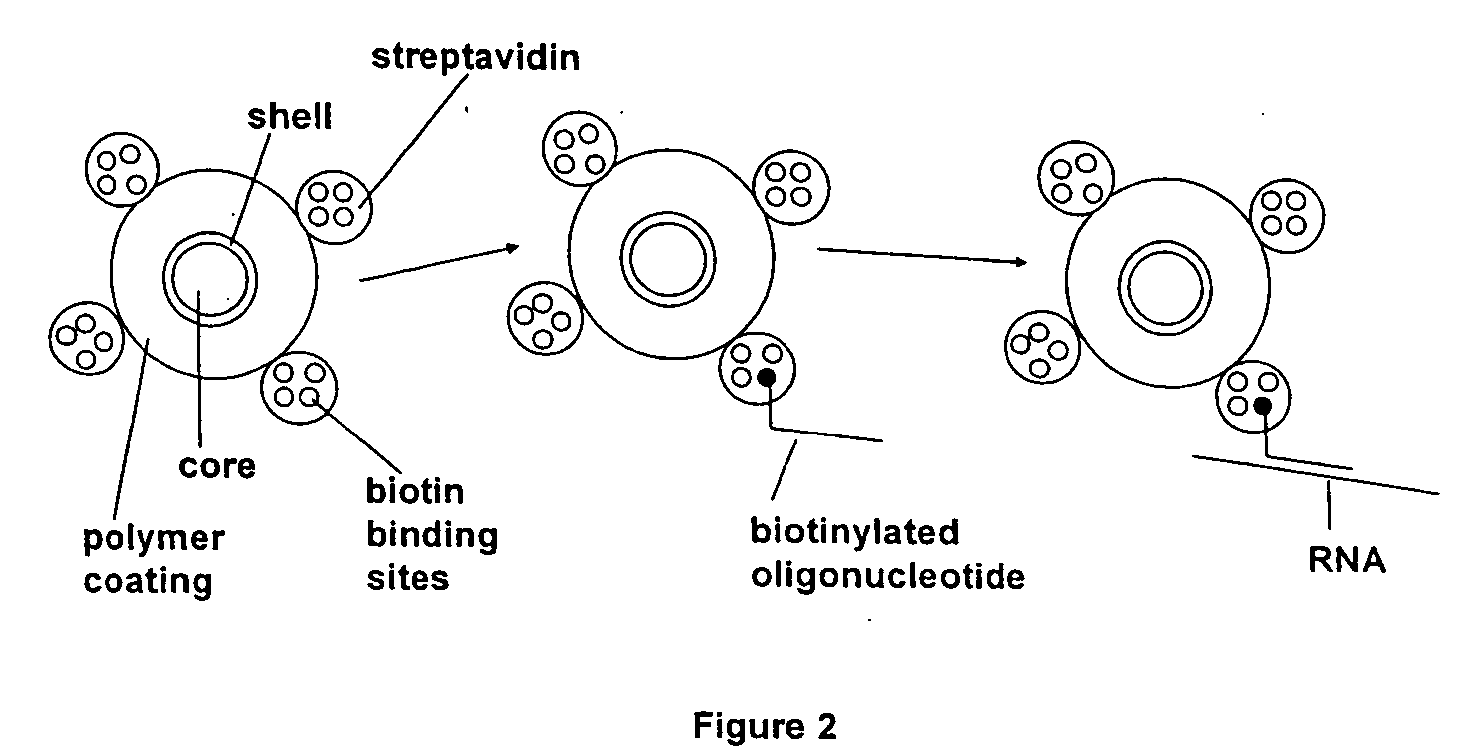Methods and compositions relating to single reactive center reagents
a technology of reactive center and reagent, applied in nanoinformatics, instruments, nanomedicine, etc., can solve the problems of limited if not entirely impeded use of single reactivities in other applications, and achieve the effect of reducing binding time and increasing temperatur
- Summary
- Abstract
- Description
- Claims
- Application Information
AI Technical Summary
Benefits of technology
Problems solved by technology
Method used
Image
Examples
example 1
Preparation of Single Center Quantum Dots using Quenching of Oligonucleotide-Quantum Dot Binding at Early Stage
[0131] A 585 nm quantum dot conjugated to streptavidin (Quantum Dot Corp., Hayward, Calif.) and a biotinylated conjugate of a 20-mer oligonucleotide (Integrated DNA Technologies, Coralville, Iowa) complimentary to a sequence on the E. coli Spike 8 system was used. The same approach can be applied to any other streptavidin-coated quantum dot. The oligonucleotide has the following sequence: 5′-ACC AGT TTC TTC ACT GCC GC-sp18-BioTEG-3′ (SEQ ID NO: 1). TEG (tetra-ethyleneglycol) is a 15 atom long linker and Sp 18 is an 18 atom carbon spacer. The tether between the sequence and the biotin was prepared in this manner to reduce any potential steric inhibition of the hybridization to the target (RNA) by the bulky quantum dot.
[0132] Different amounts of the oligonucleotide (excess between 100× and 0.25×) were incubated with 5 nM solution of quantum dots for 1 hour. The samples wer...
PUM
| Property | Measurement | Unit |
|---|---|---|
| total diameter | aaaaa | aaaaa |
| wavelengths | aaaaa | aaaaa |
| full width at half-height | aaaaa | aaaaa |
Abstract
Description
Claims
Application Information
 Login to View More
Login to View More - R&D
- Intellectual Property
- Life Sciences
- Materials
- Tech Scout
- Unparalleled Data Quality
- Higher Quality Content
- 60% Fewer Hallucinations
Browse by: Latest US Patents, China's latest patents, Technical Efficacy Thesaurus, Application Domain, Technology Topic, Popular Technical Reports.
© 2025 PatSnap. All rights reserved.Legal|Privacy policy|Modern Slavery Act Transparency Statement|Sitemap|About US| Contact US: help@patsnap.com



